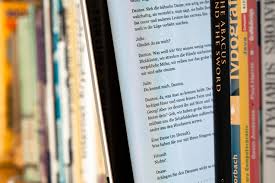Improving the Accessibility of your Mainstream Digital Content

People with print disabilities can find traditional publications difficult or impossible to read. You can make a difference to your customers, meet legal requirements and expand your market share if you take steps to be an inclusive publisher, building accessibility into your content from the very beginning. See the resource an Introduction to Inclusive Publishing to understand the terminolgy and concepts involved in mainstream accessibility.
Many publications are now designed for digital distribution and consumption, to be read on smartphones, tablets, computers, e-readers, and more. People with print disabilities can use accessibility features to achieve the best possible reading experience to suit their individual needs. The promise of a consistent, accessible reading experience can be achieved by following industry standards and guidelines.
Adding accessibility to an existing file is like adding accessibility ramps to an old building – a retro fit that can be time consuming and expensive. It is much more efficient to build accessibility into the start of your publishing workflow, so that it becomes an integral step in your content development process.
The EPUB 3 format provides the chance to offer the most accessible experience to your users and the Ace by DAISY EPUB accessibility checking tool is available to help you in your efforts. There is plenty of help available both in the resources listed on the side menu on this page and in the guidelines pages of this website.
What is an Accessible Publication?
To be universally accessible, a digital book should have the following features:
- Readable with assistive technologies.
- Text should fit all screen sizes.
- Adjustable text font, color, font size and line spacing.
- Navigable by chapter, section, page, sentence and more.
- Options to skip footnotes, sidebars, producer notes, and page numbers when reading with text-to-speech.
- Work with different input methods e.g. keyboard, mouse, and touch.
- Contain image captions and text descriptions for charts and graphs.
- Videos should be captioned or accompanied by text transcript.
- Readable on multiple platforms and devices such as computers, mobile phones, tablets, refreshable braille and digital book readers.
- Page numbers should match the print version of the same book.

